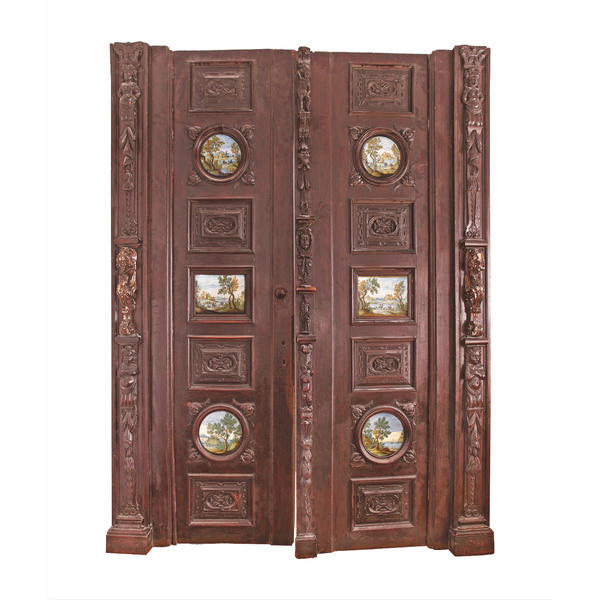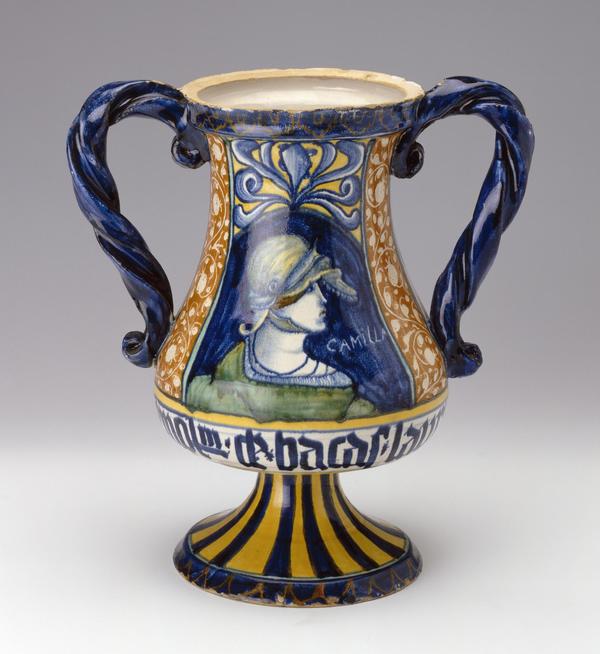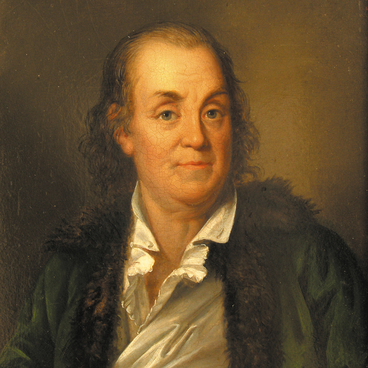Doors with inserts from painted glazed ceramics were created in the second half of the 19th century. Inserts in the technique of majolica were manufactured separately from the doors. Majolica items were produced by craftsmen from the Italian town of Castelli in the 18th – early 19th century. It is not known in which country the doors themselves were created. Researchers may only suppose that the owner ordered them already in Russia with the account of the dimensions of the delivered majolica bits.
Folding doors
Creation period
second half of the 19th century
Dimensions
286х96х21 cm
Technique
wood, carving, toning, inserts from majolica
Collection
Exhibition
4
Open in app#3
Unknown author
Folding doors
#2
#4
On the inserts, the painters from Castelli depicted sea views during a low tide. They showed how people were catching eatable sea animals with the use of different tools. The colour palette of the paintings resembles light aquarelles. The artists skillfully painted each composition into a needed shape, i.e. circles and rectangles.
#5
The technique of majolica always required speed and well-honed skills. Italian authors modeled plates out of clay and then burned them in a special furnace. The burned product was poured with glaze (or it was lowered into a tank with it entirely) and was painted with refractory paints. The painting had to be applied quickly and accurately: paints ‘stuck’ with glaze, and it wasn’t possible to fix accidental blunders. During the next burning, all materials were finally fused, and they created a unique surface with different shades and slight irregularities. Because of these features, it is impossible to find two identical majolica items.
#6
They began to paint clay already in the countries of the Ancient East. Painted ceramics came to Medieval Italy though the island of Mallorca. There is a version that the name of the island sounded milder in the Italian language, i.e. majolica, and this name finally got established in ceramics. The technique spread in Italy in the 14th century. It took a special place in Castelli.
#7
Since the 15th century they created pottery vessels for medicines in the town: they sold glass-cups, pounders and vases for medicinal herbs and powders. In the 16th century, Castellian masters started to paint pharmacy utensils in bright colours, writing down names of medications next to the pictures. This “medical” crockery became more and more fanciful and slowly lost its designated purpose. Pots for herbs, vases and coloured plates were placed on open shelves for people to enjoy nice paintings. The name of Castelli started to be associated with luxury.
Majolica items from the town of Castelli from the collection of Hermitage
#8
Gradually the masters from the town concentrated on the artistic component. Decorative tiles appeared, which were needed exclusively for the decoration of surfaces. Such “paintings in miniature” were used to decorate walls, panels, doors. In Castelli there is even a whole ceiling with majolica - it is located in the church of San Donato.
#9
The style of the masters changed along with the general art trends. After the 17th century, they developed a dim aquarelle manner in Castelli, landscapes and rural everyday life became the main themes.
#10
Yaroslavl Museum of Fine Arts
read morehide
00:00
00:00
1x
Folding doors
Creation period
second half of the 19th century
Dimensions
286х96х21 cm
Technique
wood, carving, toning, inserts from majolica
Collection
Exhibition
4
Open in app
Share




